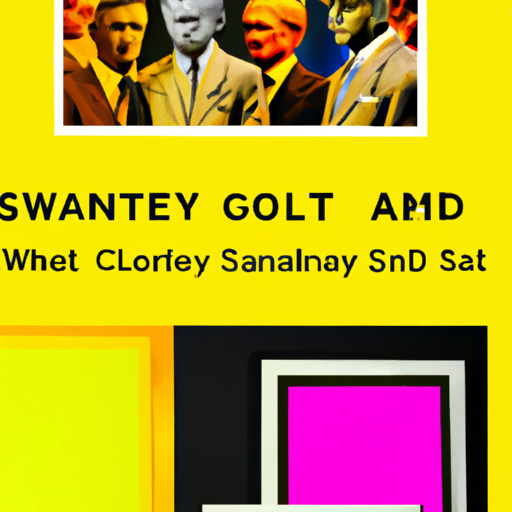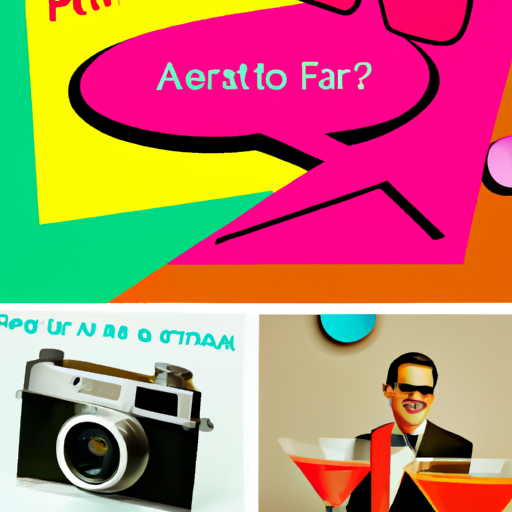
-
Table of Contents
Designing for Event Promotions: Posters, Invitations, etc.

Event promotions play a crucial role in attracting attendees and creating a buzz around an event. Whether it’s a concert, conference, or charity fundraiser, effective design can make all the difference in capturing people’s attention and generating excitement. In this article, we will explore the key elements of designing for event promotions, including posters, invitations, and other promotional materials. We will delve into the importance of visual appeal, messaging, and branding, and provide valuable insights to help you create compelling designs that drive attendance and engagement.
The Power of Visual Appeal
When it comes to event promotions, visual appeal is paramount. A well-designed poster or invitation can instantly grab attention and pique curiosity. Here are some key considerations for creating visually appealing event designs:
- Choose eye-catching colors: Colors evoke emotions and can help convey the mood or theme of the event. For example, vibrant and bold colors may work well for a music festival, while softer pastel tones may be more suitable for a charity gala.
- Use high-quality images: Images can be powerful tools for capturing attention and conveying the essence of an event. High-resolution photographs or illustrations that align with the event’s theme can greatly enhance the visual appeal.
- Employ effective typography: Typography plays a crucial role in event design. Choose fonts that are legible and align with the event’s branding. Experiment with different font sizes, styles, and weights to create visual hierarchy and emphasize important information.
- Create a focal point: A well-designed event promotion should have a clear focal point that draws the viewer’s attention. This could be an image, headline, or a combination of both. The focal point should convey the main message or highlight the key performers or speakers.
The Power of Messaging
While visual appeal is essential, the messaging of event promotions is equally important. A compelling message can create intrigue, convey the value of attending, and drive action. Here are some tips for crafting effective event messaging:
- Keep it concise: In a world filled with information overload, it’s crucial to keep event messaging concise and to the point. Use clear and concise language that communicates the event’s purpose, date, time, and location.
- Create a sense of urgency: To encourage immediate action, incorporate a sense of urgency in your messaging. Limited-time offers, early bird discounts, or exclusive access can create a sense of FOMO (fear of missing out) and drive ticket sales.
- Highlight key benefits: Clearly communicate the benefits of attending the event. Will attendees gain valuable knowledge, network with industry leaders, or enjoy a memorable experience? Highlighting these benefits can help persuade potential attendees to take action.
- Include social proof: People are more likely to attend an event if they see that others have had positive experiences. Incorporate testimonials, reviews, or quotes from previous attendees or industry influencers to build trust and credibility.
The Power of Branding
Consistent branding is crucial for event promotions. It helps create recognition, build trust, and establish a cohesive identity. Here’s how you can leverage branding in your event designs:
- Use consistent colors and fonts: Align your event promotions with the overall branding of the event. Use the same colors, fonts, and visual elements to create a cohesive look and feel across all materials.
- Include the event logo: Incorporate the event logo prominently in your designs. The logo serves as a visual anchor and helps reinforce the event’s identity.
- Consider the event’s target audience: Tailor your design elements to resonate with the event’s target audience. For example, if the event is targeting millennials, consider using modern and trendy design elements.
- Extend branding to all touchpoints: Ensure that your event branding extends beyond posters and invitations. Apply consistent branding to websites, social media graphics, email newsletters, and any other touchpoints to create a seamless and memorable experience for attendees.
Case Studies: Successful Event Promotions
Let’s take a look at some real-life examples of successful event promotions that effectively utilized design to drive attendance and engagement:
Case Study 1: Coachella Music Festival
Coachella, one of the world’s most famous music festivals, is known for its visually stunning and highly recognizable event promotions. The festival’s posters and social media graphics feature vibrant colors, bold typography, and captivating images of artists and festival-goers. The designs effectively convey the energetic and immersive experience of the festival, attracting music lovers from around the globe.
Case Study 2: TED Talks
TED Talks, renowned for their thought-provoking and inspiring presentations, also excel in event promotion design. Their posters and invitations feature clean and minimalist designs with a focus on typography. The use of bold and impactful quotes from speakers, combined with simple yet elegant visuals, creates intrigue and conveys the value of attending a TED event.
Key Takeaways
Designing for event promotions requires careful consideration of visual appeal, messaging, and branding. By following these key takeaways, you can create compelling designs that drive attendance and engagement:
- Choose eye-catching colors, high-quality images, and effective typography to create visually appealing designs.
- Craft concise messaging that highlights the event’s purpose, benefits, and creates a sense of urgency.
- Utilize consistent branding elements, including colors, fonts, and logos, to establish a cohesive identity.
- Learn from successful case studies, such as Coachella and TED Talks, to understand how effective design can drive event attendance.
Remember, designing for event promotions is an art that combines creativity, strategy, and understanding of the target audience. By implementing these insights and best practices, you can create event designs that captivate, inform, and inspire, ultimately leading to successful and memorable events.
